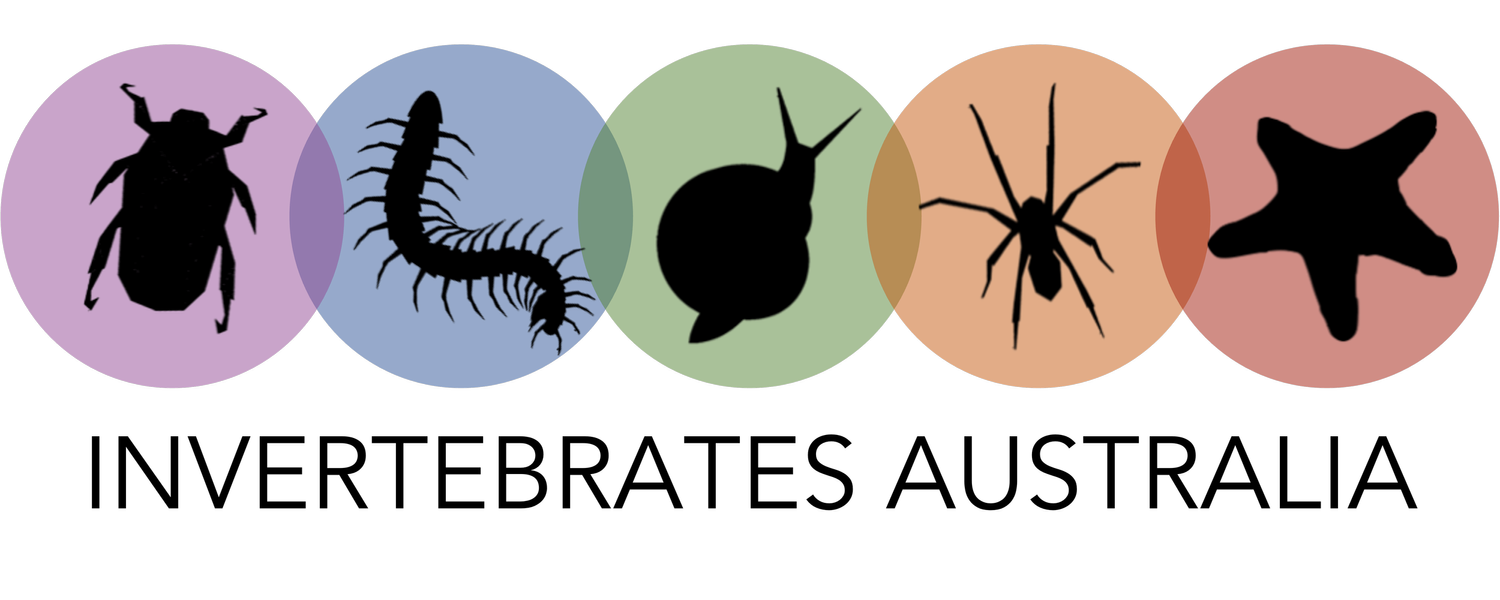
Ways to identify invertebrates
-
iNaturalist
iNaturalist (www.inaturalist.com) is an online database of biological observations and a social network of people sharing biodiversity information to help each other learn about nature. Create an account and by uploading photos or sound recordings to the website or app, iNaturalist will help you identify the inverts around you. Your observations can also be used in science and conservation if you choose to make them available. The handy guide below will teach you all about the tool.
-
CSIRO
The CSIRO has various online ID resources for those who are interested in insects, including ID information for moths, ladybirds and weevils. They also manage a great key ID site for these who only have a basic knowledge of inverts. The main aim of this site is to provide an understanding of the different types of invertebrates, their classification and anatomy, allowing everyone to become familiar with the inverts they might encounter in Australia.
-
Australian Museum Info and Keys
The Australian Museum has extensive information about invertebrates on its website, including fact sheets and various ID apps, such as the Christmas Beetle Guide mobile app and a guide to marine inverts. They also manage the Invasive Polychaetes Identifier to facilitate the identification of invasive species of polychaetes in Australia. here are also many resources available about the museum’s collections and access to journals and academic papers.
-
ID Freshwater Inverts with Waterbugs
The Waterbug App is an Australian app that helps you identify waterbugs in your waterways. You can use the app for a river health assessment as part of the National Waterbug Blitz. If you’re looking for a useful ebook, try The Waterbug Book.
-
Spider ID
There are several useful field guides out there on Australian spiders, including A Guide to the Spiders of Australia and A Field Guide to Spiders of Australia, with images to assist with identification. There is also a handy spider app called Spidentify - but it is currently being redeveloped and may not be available.
-
Ants, wasps and bees
If you’re all about ants, AntWiki has an ant identification guide, which can be searched by country. There is also an interactive guide to Hymenoptera, insects commonly known as ants, bees, wasps and sawflies, which comprise a significant proportion of arthropod diversity.
-
ID Nudibranchs (sea slugs) with Nudi.io
Whether you are an experienced scuba diver, novice tide pooler, or a seasonal snorkeller, there are nudibranchs out there for you to find, identify and log on this new app, designed to promote a better understanding of the macro world of the reef.
-
Redmap
Redmap (the Range Extension Database & Mapping project) invites the Australian community to spot, log and map marine species that are uncommon in Australia, or along particular parts of our coast.
-
Jellyfish ID
Access a wealth of useful information about jellyfish around the world. The perfect companion for anyone swimming, diving, snorkeling and playing in the water.
-
On The Fly
An interactive identification tool for Australian flies
-
Freshwater Molluscs
Australian Freshwater Molluscs is an interactive resource aimed at facilitating the identification and information retrieval of the entire freshwater mollusc fauna.

